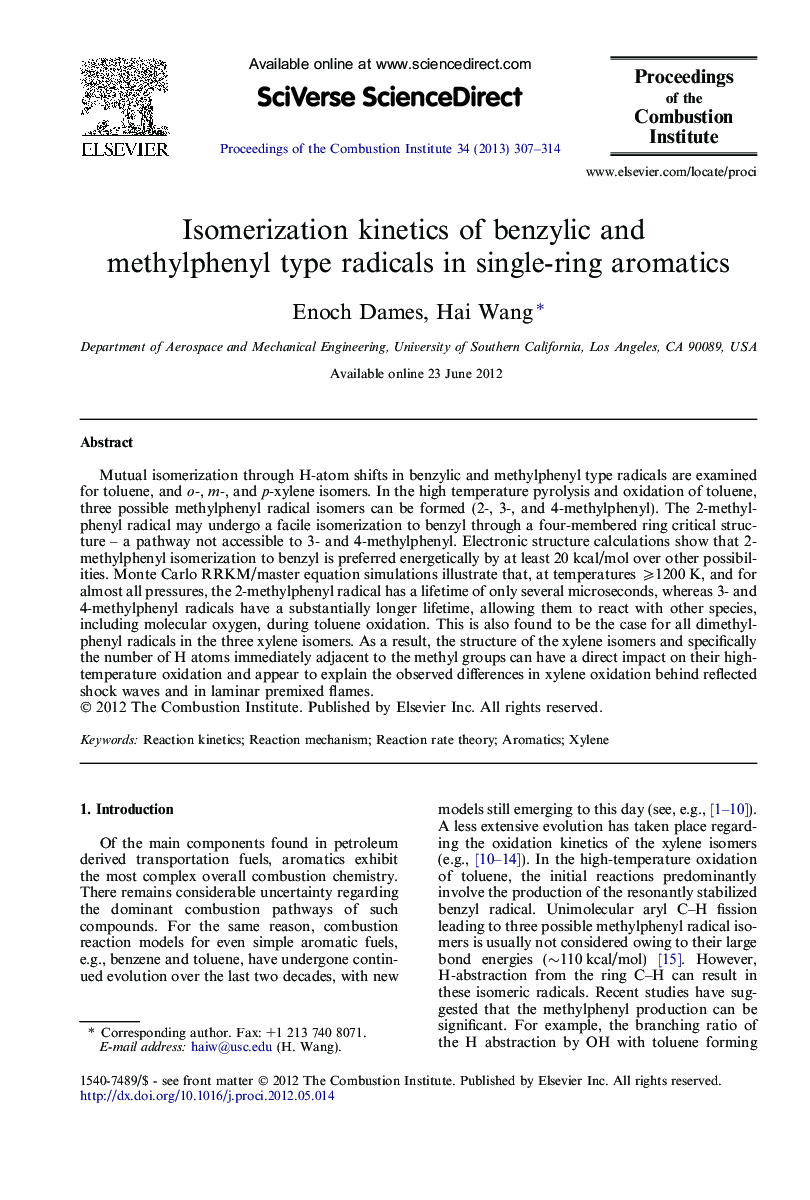| Article ID | Journal | Published Year | Pages | File Type |
|---|---|---|---|---|
| 241129 | Proceedings of the Combustion Institute | 2013 | 8 Pages |
Mutual isomerization through H-atom shifts in benzylic and methylphenyl type radicals are examined for toluene, and o-, m-, and p-xylene isomers. In the high temperature pyrolysis and oxidation of toluene, three possible methylphenyl radical isomers can be formed (2-, 3-, and 4-methylphenyl). The 2-methylphenyl radical may undergo a facile isomerization to benzyl through a four-membered ring critical structure – a pathway not accessible to 3- and 4-methylphenyl. Electronic structure calculations show that 2-methylphenyl isomerization to benzyl is preferred energetically by at least 20 kcal/mol over other possibilities. Monte Carlo RRKM/master equation simulations illustrate that, at temperatures ⩾1200 K, and for almost all pressures, the 2-methylphenyl radical has a lifetime of only several microseconds, whereas 3- and 4-methylphenyl radicals have a substantially longer lifetime, allowing them to react with other species, including molecular oxygen, during toluene oxidation. This is also found to be the case for all dimethylphenyl radicals in the three xylene isomers. As a result, the structure of the xylene isomers and specifically the number of H atoms immediately adjacent to the methyl groups can have a direct impact on their high-temperature oxidation and appear to explain the observed differences in xylene oxidation behind reflected shock waves and in laminar premixed flames.
